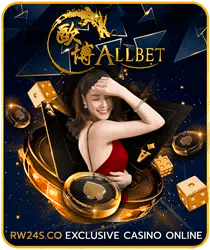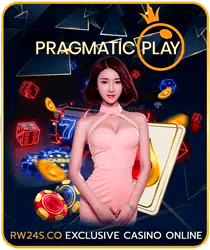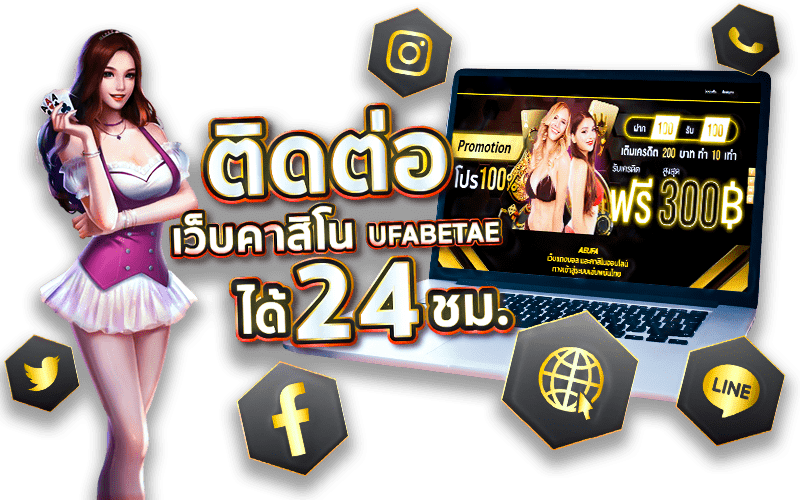
miami 1688 สล็อต แหล่งบริการสล็อตดีๆ ที่พร้อมจะเปลี่ยนวงการสล็อตออนไลน์ไปตลอดกาล โดยให้บริการสล็อตแมชชีนมากมายจากผู้ให้บริการชั้นนำมากมายทั่วโลก รวบรวมมาไว้บนเว็บเดียวนี้ กับเราคุณสามารถเล่นและรับเงินได้
เว็บของเราเปิดให้ผู้เล่นทุกเพศและทุกวัย มาทำกำไรกับแหล่งเดิมพันที่ดีที่สุด คอลเลกชันสล็อตแมชชีนมากมายจากทั่วทุกมุมโลกเพื่อให้คุณเล่นและสนุกไปกับทุกช่วงเวลาที่คุณต้องการได้อย่างไม่มีขีดจำกัด มาพร้อมระบบการทำธุรกรรมฝาก/ถอน ไม่มีขั้นต่ำ
miami 1688 เว็บตรง ฝากถอน วอ เลท ให้คุณทำธุรกรรมได้อย่างปลอดภัย คุณสามารถมั่นใจได้ว่าไม่มีการหลอกลวงอย่างแน่นอน ใครที่อยากสมัครยูสเซอร์ใหม่ บอกเลยว่าไม่ควรพลาดเด็ดขาด คลิกเพื่อรับโปรโมชั่นสล็อตและสิทธิ์ไม่จำกัดในบราวเซอร์ทันที พร้อมสนับสนุน และสนับสนุนสมาชิกเว็บของเราอย่างครอบคลุมและมีคุณค่าตั้งแต่เริ่มต้นเป็นสมาชิกเว็บของเรา รับโปรโมชั่น และโบนัสไม่จำกัด รับรองว่า มีโปรโมชั่นมากมายให้เลือก







เป็นสิ่งสำคัญมากสำหรับผู้เล่น โดยเฉพาะผู้ที่สนใจความสะดวกสบายและความปลอดภัยในเรื่องการเงิน ด้วยระบบการฝากและถอนเงินอัตโนมัติที่สามารถทำงานได้รวดเร็วและมั่นคงเพียงพอที่จะรองรับความต้องการของผู้เล่น ทำให้คุณสามารถสนุกไปกับการพนันออนไลน์ได้ไม่จำกัดและประสบการณ์ที่ดีกว่า เนื่องจากไม่ได้ใช้โดยตัวแทน จึงอาจมีความเสี่ยงต่อความเป็นส่วนตัวและความปลอดภัยของข้อมูลส่วนบุคคลของผู้เล่น miami 1688 สล็อต พร้อมเล่นสล็อตออนไลน์สุดมันส์รวมถึงสล็อตมากมายจากค่ายเกมต่างๆทั่วโลก
ร่วมเดิมพันเกมสล็อตบนเว็บของเราและสนุกไปกับรางวัลไม่จำกัดมูลค่านับแสน มีคุณสมบัติที่โดดเด่นที่รับประกันว่าเราจะสามารถเดิมพันสล็อตออนไลน์บนเว็บของเราได้ เกมสล็อตมันดีจริงๆ ไม่ต้องเดินทางไปคาสิโน คุณสามารถเล่นเกมสล็อตออนไลน์ miami 1688 เว็บตรง ฝากถอน วอ เลท ได้ทันทีโดยใช้เพียงโทรศัพท์มือถือ นอกจากนี้ยังมาพร้อมกับสิทธิประโยชน์อื่นๆ อีกมากมายที่ฉันสามารถบอกคุณได้ว่าคุณจะไม่พบในเว็บสล็อตอื่นๆ
รวมไปถึงเกมพนันออนไลน์ที่หลากหลายให้คุณเลือกเล่นได้ไม่จำกัด เช่น เกมส์ออนไลน์ บาคาร่า รูเล็ต ทายผลฟุตบอล ทายสลาก ยิงปลา และเกมพนันออนไลน์อื่นๆอีกมากมายที่คัดสรรเฉพาะเกมระดับบนสุดเท่านั้น กีฬา. มาเล่นด้วยระบบอัตโนมัติที่ดีที่สุดในเว็บ miami 1688 สล็อต ของเรา รับประกันประสิทธิภาพ ไม่สะดุด เล่นเกมได้เสถียร รับเงินเร็ว ไม่มีการหยุดทำงาน
รวมถึงสล็อตแมชชีนให้เลือกกว่า 25 ค่ายดัง ไม่มีซ้ำหรือซ้ำซากและมีการอัปเดตเกมใหม่ทุกเดือน ไม่ว่าจะเป็นเกมสล็อตออนไลน์ที่มีการจ่ายเงินจากโกดังชื่อดังมากมาย รวมถึงบริการถ่ายทอดสดเพื่อทำนายผลการแข่งขันฟุตบอลนัดสำคัญด้วย
รวมถึงการเดิมพันบาคาร่าและเกมไพ่ต่าง ๆ ซึ่งทั้งสองรายการถ่ายทอดสด และเล่น miami 168 ทางเข้า ในรูปแบบกราฟิกบอกเลยว่ามีวิธีเล่นไม่จำกัด รับความสนุกสนานที่ไม่เหมือนใครแม้เพียงวันเดียว


ไม่ต้องลงทุนเงินอีกเลย สำหรับใครที่อยากมาทำความรู้จักกับเกมอื่นๆ miami 168 ทางเข้า ยังเปิดให้บริการ โดยเฉพาะเกมไพ่บาคาร่า มันเป็นเกมไพ่ยอดนิยม และได้รับความสนใจจากนักลงทุนจำนวนมากด้วยอัตราการจ่ายที่สมเหตุสมผล
ยิ่งไปกว่านั้นยังมีวิธีเล่นที่ง่ายอีกด้วย ไม่มีปัญหา ใช้เวลาลงทุนไม่ถึงหนึ่งนาที ให้คุณได้สัมผัสประสบการณ์เกมสุดท้าทายที่รองรับทุกระบบปฏิบัติการ iOS และ Android เพื่อร่วมสนุกเราสามารถสมัครได้ง่าย ๆ ไม่ต้องเสียเวลากับปัญหาและปัญหา เพียงกรอกรายละเอียดไม่เกิน 5 นาที ก็สามารถสมัครได้อย่างรวดเร็ว
นอกจากนี้ miami 1688 สล็อต ก็ยังมีคอลเลกชันสล็อตคุณภาพดีไว้ให้บริการอีกด้วย เว็บของเราให้บริการทุกวันตลอด 24 ชั่วโมง มีความมั่นคงทางการเงินสูงเหมาะสำหรับผู้ที่ต้องการสร้างรายได้ หรือต้องการหารายได้พิเศษ มีเงินหลายล้านดอลลาร์ลอยอยู่บนเว็บ ไม่ว่าคุณจะนำมาหลายร้อยหรือล้าน กี่แสนถูกแล้วกี่ล้าน เราพร้อมโอนเงินเข้าบัญชีของคุณทันที ไม่หัก ไม่ต้องรอนาน เล่นได้ทันที เราโอนจริง ไม่ยั้ง ไม่เบี้ยว ปลอดภัยแน่นอน







miamiสล็อต อัปเดตมันทุกวัน สร้างความสนุกสนานให้กับผู้เล่นที่ได้เข้าใช้บริการด้วยรูปแบบใหม่ ความเสถียร ความคมชัด แสง สี เสียง และเอฟเฟ็กต์ราวกับว่าคุณสามารถเล่นคนเดียวผ่านหน้าจอได้ สล็อตออนไลน์มีความตรงไปตรงมา และพร้อมมอบความสุขที่คุณหาไม่ได้จากที่อื่น เว็บสล็อตนี้ โบนัสสูงสุดถึง 100x ให้บริการผ่านระบบอัตโนมัติไม่ผ่านคนกลาง ไม่ต้องล็อกอินกับแอดมิน ทำให้ miami 1688 สล็อต มีความเสถียรและปลอดภัยมากขึ้นในเรื่องของข้อมูล ซึ่งไม่ว่าคุณจะต้องการฝากหรือถอนเงินในเวลาใด ก็สามารถเข้าสู่ระบบและดำเนินการได้ทันที ช่วยตรวจสอบสถานะและค้นหาเกมสล็อตคุณภาพดีที่สุด พร้อมเกมสล็อตมากกว่า 1,000 เกม

เว็บเกมที่มีระบบถ่ายทอดสด คุณภาพเยี่ยม ระบบแสง เสียงคมชัดและสวยงาม ดังนั้นคุณจึงสามารถดื่มด่ำไปกับเกมทำเงินสุดคลาสสิกได้ มันเหมือนกับการเล่นในคาสิโนจริง นี่เป็นผู้ใช้เก่าหรือผู้ใช้ใหม่ รับรองว่าแตกง่าย สมัครสมาชิกเว็บเกมทำเงินของเราตอนนี้ ไม่ว่าคุณจะมีรายได้เท่าไหร่ เรายินดีจ่ายเงินให้คุณทันที หากฐานะการเงินมั่นคงก็มีกองทุนสำรองพร้อมจ่ายแบบไม่มีเหตุฉุกเฉิน การันตีโดยผู้เชี่ยวชาญสล็อตมืออาชีพนับแสนคน miami 1688 สล็อต










ผู้ให้บริการเว็บสล็อตโดยตรงไม่ผ่านเอเย่นต์ หากคุณต้องการเล่น สล็อต ฝากถอน ไม่มี ขั้น ต่ํา วอ เลท เว็บตรงไม่ผ่าน เอ เยน เว็บอันดับ 1 ของโลกเกมออนไลน์ได้เงินจริงอัพเดทล่าสุดทุกวันและเว็บตรงไม่ผ่าน ตัวแทนแตกง่าย และเรายังมีรูปแบบเกมที่สามารถเล่นได้ ง่าย ได้เงินจริง เล่นได้บนมือถือ แท็บเล็ต และคอมพิวเตอร์ รองรับทั้งระบบ IOS และ Android เว็บสล็อตโดยตรง ไม่ผ่านเอเย่นต์ รวมทุกโกดัง คุณสามารถมั่นใจได้ว่าเกมที่เราเลือกนั้นเป็นเกมทั้งหมดที่เสนอโบนัสที่พบบ่อยที่สุดและช่วยให้คุณนำเงินเข้ากระเป๋าของคุณได้อย่างง่ายดาย
© 2024 rv2share.com | COPYRIGHT ALL RIGHTS RESERVED
ผู้ให้บริการเว็บสล็อตโดยตรงไม่ผ่านเอเย่นต์ หากคุณต้องการเล่น สล็อต ฝากถอน ไม่มี ขั้น ต่ํา วอ เลท เว็บตรงไม่ผ่าน เอ เยน เว็บอันดับ 1 ของโลกเกมออนไลน์ได้เงินจริงอัพเดทล่าสุดทุกวันและเว็บตรงไม่ผ่าน ตัวแทนแตกง่าย และเรายังมีรูปแบบเกมที่สามารถเล่นได้ ง่าย ได้เงินจริง เล่นได้บนมือถือ แท็บเล็ต และคอมพิวเตอร์ รองรับทั้งระบบ IOS และ Android เว็บสล็อตโดยตรง ไม่ผ่านเอเย่นต์ รวมทุกโกดัง คุณสามารถมั่นใจได้ว่าเกมที่เราเลือกนั้นเป็นเกมทั้งหมดที่เสนอโบนัสที่พบบ่อยที่สุดและช่วยให้คุณนำเงินเข้ากระเป๋าของคุณได้อย่างง่ายดาย
© 2024 rv2share.com | COPYRIGHT ALL RIGHTS RESERVED